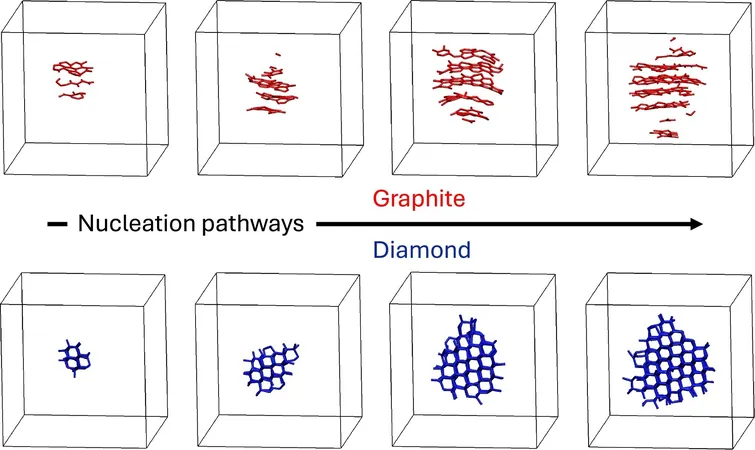
Unlocking the Cosmos: The 6 Most Expensive Mega-Projects That Revolutionized Space Exploration
2025-05-25
Author: Charlotte
A New Era of Space Exploration
When we think of space exploration, we often marvel at its scientific breakthroughs. However, these astounding missions are not just about curiosity; they are monumental feats showcasing global collaboration, decades of research, and staggering financial investments. Discover the six most expensive projects that have redefined our approach to the cosmos.
1. The International Space Station – A Whopping $150 Billion
The ultimate testament to human ingenuity, the International Space Station (ISS) holds the title for the most expensive man-made structure—costing an astounding $150 billion. Construction kicked off in 1998, and for over two decades, it has served as a continuously occupied laboratory, a beacon of international partnership between NASA, Roscosmos, ESA, JAXA, and CSA—pioneering research and diplomacy in low Earth orbit.
2. The Space Shuttle Programme – A Sky-High $209 Billion
NASA’s groundbreaking Space Shuttle Programme, which operated from 1981 to 2011, racked up an eye-watering cost of approximately $209 billion. This revolutionary project enabled daily human spaceflight, facilitating satellite launches, the ISS's construction, and numerous scientific experiments. The shuttle’s unique partially reusable design set it apart from previous missions, marking a significant shift in space travel.
3. The Apollo Programme – A Historic $109 Billion
The iconic Apollo missions, which ran from 1961 to 1972, stormed the skies with an adjusted cost of about $109 billion. Launched during the fervor of the space race, this ambitious initiative achieved a monumental feat when Neil Armstrong became the first human to set foot on the Moon in July 1969—a defining moment in human history that continues to inspire generations.
4. The James Webb Space Telescope – A Stellar $8.8 Billion
Launched in December 2021, the James Webb Space Telescope represents the pinnacle of observational science, costing approximately $8.8 billion. It is designed to peer deeper into the universe than any telescope before, allowing astronomers to explore space in ways previously thought impossible, fundamentally enhancing our understanding of the cosmos.
5. The Global Positioning System – A Cost of $12 Billion
Kicking off in 1978, the Global Positioning System (GPS) represents a $12 billion investment by the US Department of Defense. Today, it is an essential tool for global navigation, finance, and telecommunications, showcasing how military innovation has transformed everyday life.









 Brasil (PT)
Brasil (PT)
 Canada (EN)
Canada (EN)
 Chile (ES)
Chile (ES)
 Česko (CS)
Česko (CS)
 대한민국 (KO)
대한민국 (KO)
 España (ES)
España (ES)
 France (FR)
France (FR)
 Hong Kong (EN)
Hong Kong (EN)
 Italia (IT)
Italia (IT)
 日本 (JA)
日本 (JA)
 Magyarország (HU)
Magyarország (HU)
 Norge (NO)
Norge (NO)
 Polska (PL)
Polska (PL)
 Schweiz (DE)
Schweiz (DE)
 Singapore (EN)
Singapore (EN)
 Sverige (SV)
Sverige (SV)
 Suomi (FI)
Suomi (FI)
 Türkiye (TR)
Türkiye (TR)
 الإمارات العربية المتحدة (AR)
الإمارات العربية المتحدة (AR)